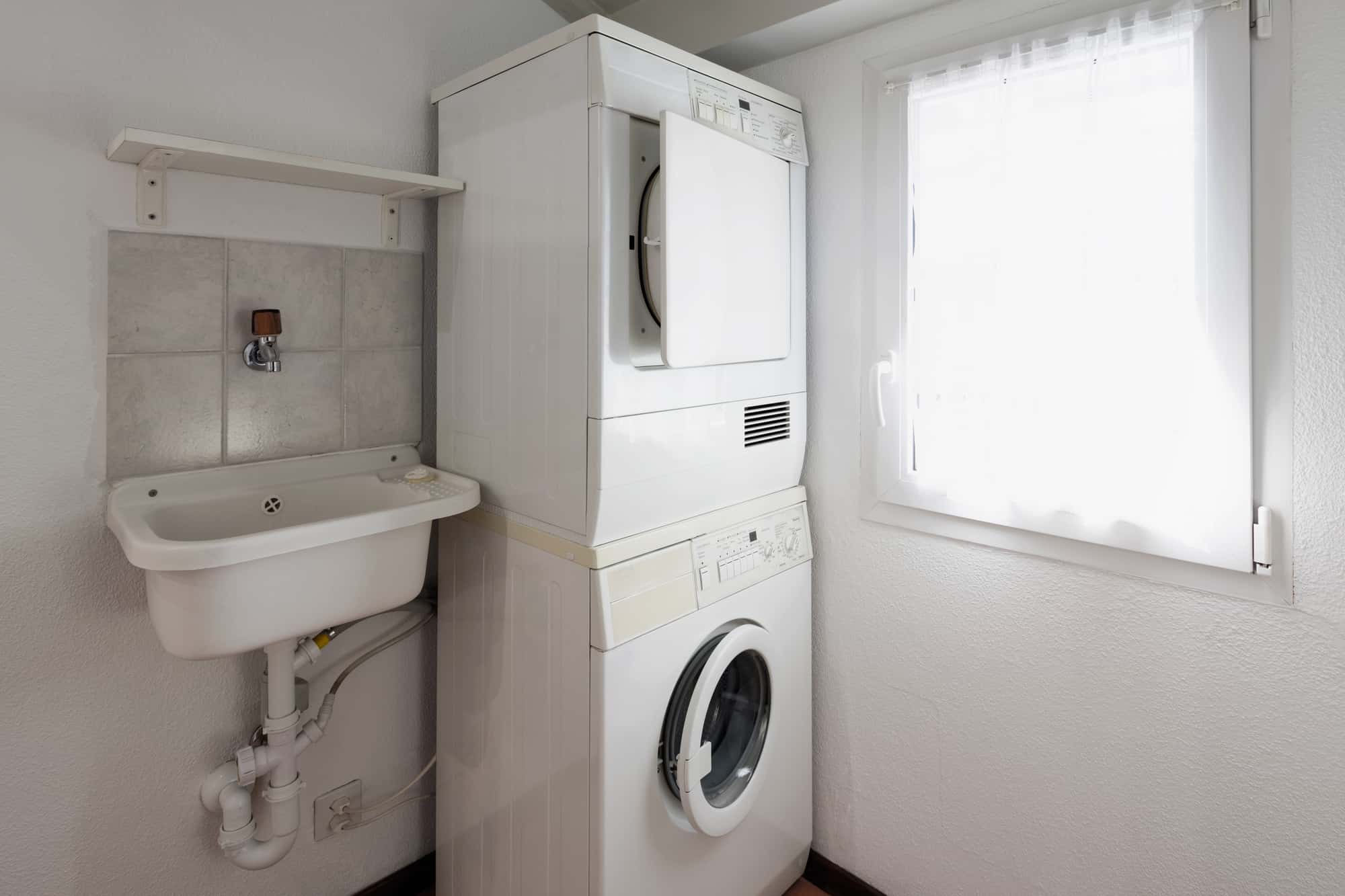Wondering how high your washing machine can pump water? Understanding your machine’s drain height capacity is crucial for optimal performance and to avoid potential clogs or overflow issues. Learn the ideal maximum height for your washing machine drain to ensure smooth and efficient operation.
Setting an appropriate drain height is crucial to keeping your washer functioning correctly. You must set it up according to the manufacturer-recommended configurations to get the most out of your washing machine.
Table of Contents
There are several things you need to know to get this configuration right, and top of that list is how high your unit can pump.
Standard washing machine models can pump as high as 8 feet (243.84 cm), while compact washers can pump no more than 5 feet (152.4 cm) of drain height. Keeping the drain height within limits is crucial to maintaining an optimal drain rate.
In the following sections, we’ll dig into the effects of varying drain heights and how falling lower or higher than standard thresholds can be detrimental to your appliance.
What’s the Maximum Height for a Washing Machine Drain?
The maximum height for a standard washing machine drain is 8 feet (2.4 m). The drain height limit for compact washing machines is slightly lower at 5 feet (1.5m).
Modern washers use powerful pumps to push water out of the machine after each entire wash cycle at a rate of up to 17 gallons (77 liters) per minute, depending on the type and model.
Top load washing machines generally have more powerful drain pumps installed. These machines can push water out at a rate of 15 – 17 gallons (68-77 liters) per minute. On the other hand, front load washer drain pumps are commonly rated at 10 gallons (45 liters) per minute.
Keep in mind, though, that the drain flow rate is greatly affected by the height of the outlet. As you increase its height, the rate at which drain water is pumped out also decreases. You can use the table below to estimate the drain flow rate for a specific drain height. (Source: Homeguide Info)
| Additional Drain Pipe Height | Drain Water Flow Rate (Gallons per minute, Top Load) | Drain Water Flow Rate (Gallons per minute, Front Load) |
|---|---|---|
| Minimum height (30” or 76 cm for top load; 24” or 61 cm for front load) | 15 | 10 |
| 1 foot (30.48 cm) | 14 | 9 |
| 2 feet (60.96 cm) | 13 | 8 |
| 3 feet (91.44 cm) | 12 | 7 |
| 4 feet (121.92 cm) | 11 | 6 |
| 5 feet (152.4 cm) | 10 | 5 |
| 6 feet (182.88 cm) | 9 | 4 |
In general, an increase of 1 foot (30.48 cm) in the drain height decreases the drain water flow rate by 1 gallon (4 liters) per minute. The flow rate of drain water decreases due to the additional water that needs to move from the bottom of the washer to the outlet as you increase the drain height.

Can a Washing Machine Drain Be Too High To Pump?
A washing machine drain can be too high to pump. Washer drain pumps have a specified power rating, so they can only pump out water at a certain flow rate for a particular drain height. If the drain is too high, the flow rate will be too low to push the water out of the washer, resulting in backflow.
From the table presented previously, we can see how the flow rate decreases as the drain height is increased. So if you install the drain too high (more than 8 feet above the bottom of the washer), the drain flow rate may become too low for the practical use of a washing machine.
For example, today’s most water-efficient washing machines still use around 14 gallons (53 liters) of water per wash cycle. This means that the most efficient front load washers with a minimum drain height of 24 inches (60.96 cm) will be able to drain the water in less than 2 minutes.
If the drain height is increased to 8 feet (243.84 cm), the water flow rate will drop to 4 gallons (15 liters) per minute, and the time it takes to drain 14 gallons (53 liters) of water completely will increase to around 4 minutes.
Just imagine if you increase the height beyond 8 feet (243.84 cm), say 10 feet (304.8 cm), the drain flow rate will reduce to only around 2 gallons (7.6 liters) per minute, and the draining time will balloon to 7 minutes.
Apart from the longer draining time, increasing the water drain height of your washing machine also increases the chances of drain water flowing back into the washer. This happens when the pump cannot push the water out adequately due to a high drain outlet.
Should You Always Elevate a Washing Machine Drain?
You should only elevate a washing machine drain if it’s below the minimum height specified in the user manual. The minimum drain height for top-loading machines is 30 inches (76.2 cm), while that of their front-load counterparts is 24 inches (60.96 cm).

If your unit’s drain height is below these limits, elevating it can make your machine more efficient and prevent operational mishaps. How? Let me explain.
In physics, we were told that water always seeks its own level. This means that when you put water in a container, the water level is uniform throughout, no matter the container’s shape.
The same goes for the washing machine and its washer drain. Since the washing machine drain pipe is connected to the washer tub, you can imagine it as a single container.
So if you place the drain outlet below the water level inside, the water will spontaneously flow outside without the drain pump’s assistance.
This is problematic during operation because it can lead to siphoning, which happens when the washer experiences simultaneous filling and draining due to a low drain height causing improper wash cycles. (Source: SFGATE)
Another reason you should always elevate the washing machine drain when it’s below the recommended minimum height is to prevent overflow of the water when draining.
Sometimes, the amounts of water your laundry area plumbing can handle is smaller than the drain flow rate causing overflows. So when deciding the height of your washer’s drain, you’ll want to consider the capacity of the water pipes in the area housing your washing machine.
The takeaway is that setting the drain height too high may result in an extremely long draining time, while setting it too low may lead to siphoning. In both scenarios, your washing machine may not work efficiently, if at all.










